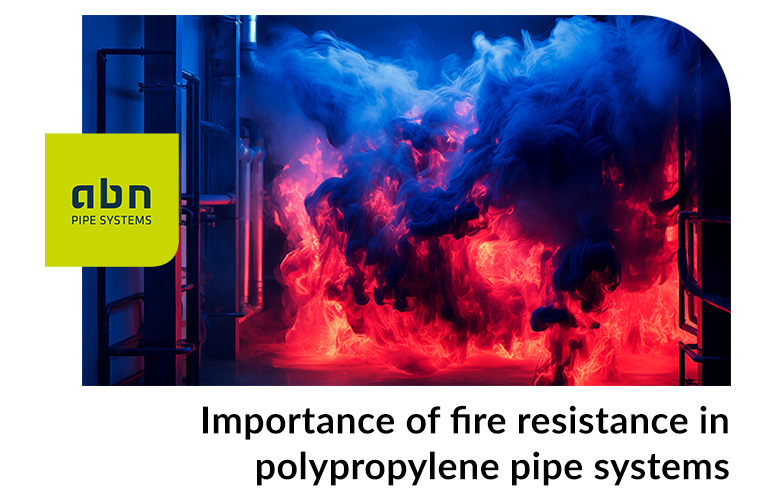In the world of engineering and construction, safety is a priority. En el mundo de la ingeniería y la construcción, la seguridad es una prioridad.
From the selection of material types to fire resistance testing, every aspect contributes to the creation of safer and more fire resistant environments.
How is the fire resistance of a building element classified?
The structural well-being of buildings depends to a large extent on the ability of piping systems to maintain their functionality even under the most extreme conditions, such as fire.
In order to classify the reaction to fire of building materials, among other parameters, Euroclasses are used in a standardised way. This classification refers to the 2004 merger of the European classification criteria on Reaction to Fire of building materials, combustibility and other parameters such as smoke emission and flaming droplet fall.
In Spain, based on the previous system, the Technical Building Code (Código Técnico de la Edificación, CTE) was defined, which establishes the basic quality requirements that buildings must meet in relation to basic safety and habitability requirements. With reference to piping systems, it should be noted that in the case of construction elements that are located in protected corridors and stairways or in car parks and special risk areas, they must comply with a stringent classification of B-s1, d0. This means, according to the Euroclasses, that the element must be made of “hardly combustible materials” (B), with “low smoke emission” (s1) and “no dripping” (d0).
Polypropylene pipes and their reaction to fire
In this context, soundproof polypropylene pipes emerge as an innovative and safe solution. The ABN//EVAC Energy Plus range (pipe + fittings) is an example of such pipes, which not only stand out for their ability to resist wear and corrosion, but also for their exceptional fire resistance.
In accordance with the classification of reaction to fire according to the standard UNE EN 13501This range is additivated to pass the most stringent reaction to fire tests, which gives it the Certification AENOR verifying compliance with the requirements of these standards and compliance with the Technical Building Code (CTE). In addition, this range has also been subjected to tests such as the optical smoke density test or the Gaiker Institute’s product halogen gas quantity determination test.
On the other hand, the malleability of polypropylene allows for quick and easy installation, by means of an elastic joint, without the need to use glues or adhesives (as in the case of PVC, which reduces construction times and associated costs). This translates into an additional benefit for projects that seek not only to meet the highest fire resistance standards but also to optimise the overall efficiency of the project.
Fire resistance tests on pipes
A central component in the assessment of fire resistance in piping systems is fire resistance testing. These simulate real fire conditions and test how piping systems behave under different temperature and pressure levels. The results of these tests are crucial in determining the fire resistance classification of a specific system.
In order to carry out an accurate assessment, it is necessary to follow internationally recognised norms and standards. Organisations such as ASTM (American Society for Testing and Materials), ISO (International Organization for Standardization) and NFPA (National Fire Protection Association) provide detailed guidelines for fire resistance testing. These standards ensure that the assessment is carried out in a rigorous and standardised manner, providing a sound basis for decision making in the design and installation of fire resistant piping systems.
However, the assessment of fire resistance should not be limited to a single event. Regular maintenance and ongoing inspections are essential to ensure that piping systems continue to meet fire resistance standards over time. Early detection of potential problems and early intervention can make a differ
